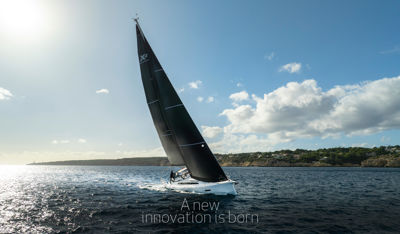
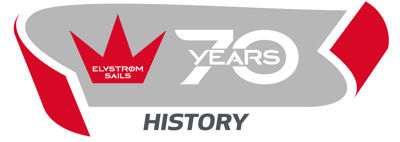
2024 is a new and very exciting year in the history of Elvstrøm Sails – and more notably, it also marks the 70th anniversary of the company.
Elvstrøm Sails has covered a lot of ground since Paul Elvstrøm first took his visions and ideas for better sails and better dinghy racing to the market.
In this first chapter of our celebration of 70 years of sailmaking, we are going to look back at the history of Elvstrøm Sails. From the start in the basement under the Elvstrøm family villa just north of Copenhagen and to today’s format which employs over 300 people across Europe.

At the starting line
Paul Elvstrøm was right in the middle of his competitive career when he decided to try his hand as a sailmaker. Following the wins at the Olympics in London 1948 and Helsinki in 1952, Elvstrøm found that time was due for a change in his working life.
Having until then been a successful entrepreneur in bricklaying and contracting, Elvstrøm cleared out the basement of the family villa in Hellerup, just north of Copenhagen. Paul Elvstrøm had his visions clear, and through his early tests and attempts at making dinghy sails, he soon found himself in a position where the product was competitive – and where ideas were aplenty for making dinghy racing better, faster, and safer than ever.

Setting sails
The loft in the basement took shape using just one sewing machine, and with the help of close friend Erik “Strit” Johansen, Elvstrøm opened the doors on Elvstrøm Dinghy Sails in 1954.
Paul Elvstrøm were on to something. The sails soon showed their competitive potential and were in strong demand – and building on his past and present experiences in top-level dinghy racing, Elvstrøm also put his ideas into production. Bailing a dinghy was always an issue and more than often also a reason for not finishing the race at all.
Elvstrøm came up with the self-bailer which in term solved the problem. The design of the self-bailer was a silent revolution in the sport – and in fact, it is still in production today under a different name.
Another early product which made a huge difference in the world of dinghy racing was the floating vest. Back then, floating vests were nowhere to be seen in dinghy racing, but this design changed it all. It made it possible to wear a vest without any hinderance in handling the dinghy, which soon became a hit.
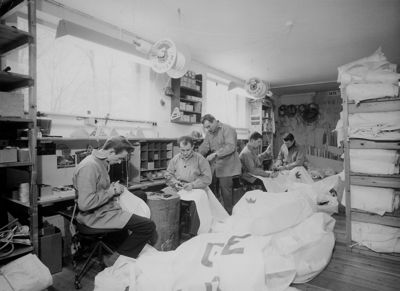
New facilities
The 60’s marked a step up in gear for Elvstrøm Dinghy Sails. The company ended up moving house in 1963 to a new facility in Rungsted Havn, now employing 20 – and five years later, it once again outgrew its walls and moved to the first real factory setting. This was in 1968, where Paul Elvstrøm opened doors to his new premises in Kokkedal.
In Kokkedal, Elvstrøm Sails kept on growing while Elvstrøm was still at the height of his sporting career – at the same time as he also designed and produced boats with Elvstrøm/Kjærulff Yachtdesign.
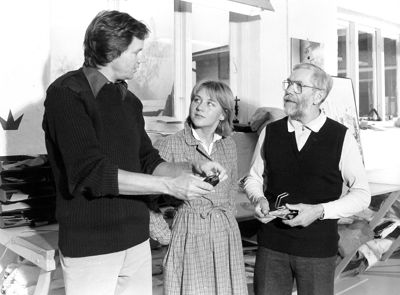
Moving west
This was a very busy period of time for Paul Elvstrøm, who eventually made the decision to selling his majority stake in Elvstrøm Sails by 1976 – with the new owners Hans Fogh and Henning Olsen moving the production across Denmark to Aabenraa, where Elvstrøm Sails is still based today.
The sale of the majority stake also meant that Elvstrøm Dinghy Sails became Fogh-Sails Europe A/S in 1976 – until it three years later was given the name it has today: Elvstrøm Sails.
This happened as Hans Fogh retired and Henning Olsen took over the company. The year after, in 1980, Henning Olsen passed which left his son Claus Olsen in charge. Claus Olsen took the loft into the new decade with a much stronger focus on product development as well as marketing.
It became the foundation of our presence in the OEM market today – and it was also a stepping stone for the Elvstrøm brand, not only as a sailmaker but also in the fashion industry. Elvstrøm sailing gear and especially the now legendary Lemania built watches were big hits in the 80’s.
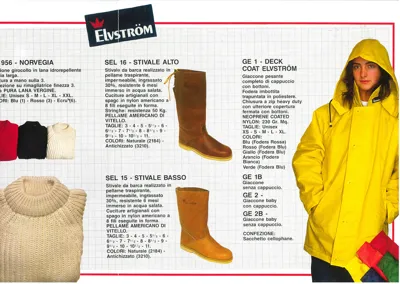
Conquering the cruising market
Fashion was not the only area in which Elvstrøm Sails expanded heavily through the 80’s and into the 90’s. Product development and the market demand led Elvstrøm Sails onto a more cruising oriented path, and to this day, the cruising segment is still going strong.
Cruising and high-performance cruising sails also led to several product innovations and developments in this period. The introduction of furling systems became a game changer for the company and for the cruising market heading towards the new millennium – and still today, furling sails in all shapes and sizes are a vital part of our product lineup and development programmes.

EPEX
The new millennium saw the introduction of new ways of constructing sails. In 2002 Elvstrøm Sails purchased the American sailmakers Sobstad and subsequently changed the company name to Elvstrøm Sobstad. A key part of the deal was the then new Genesis technology which Sobstad had developed.
Genesis was originally the brainchild of Peter Conrad, who invested much time and effort in constructing a radical new design. A sail without any traditional type of cloth – the vision of Peter Conrad was to make load-bearing threads and then laminate the sail. It held multiple advantages including a significant reduction in the stretch which traditional designs get over time. It also removes the need for having seams, and the sail also held a weight advantage.
Conrad patented the idea with Sobstad, and through uniting with Sobstad, Elvstrøm Sails came onboard and joined the development of Genesis.
This paved the way for introducing new materials, and it was in the mid-00’s we introduced the membrane technology with materials such as Technora, Vectran and carbon in laminated configurations. The latest innovation was named in 2008 and introduced as EPEX.
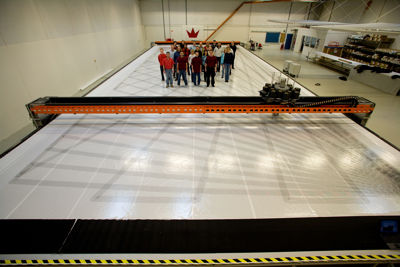
More OEM partners
While EPEX has been a vital part of our product lineup since 2008, Elvstrøm Sails also developed a strong setup for yards, and has scaled up significantly in this area.
In fact, it has been a target for Elvstrøm Sails through the later years, and while we had a total of 14 OEMS in 2014, Elvstrøm Sails currently supports 29 different European yacht brands and yards today.
Combining all Elvstrøm SailPoints, sales and service outlets, Elvstrøm Sails is represented in around 150 cities worldwide.
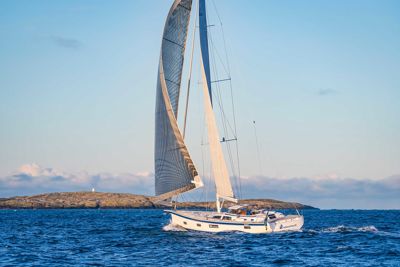
Heading for the future - sustainability and new products
EKKO is our commitment at Elvstrøm Sails to listen and respond with a sustainable approach to products, materials, and processes.
We acknowledge that it is a process and that we are just a part of it, since we depend on partners in the industry to pursue the same agenda.
To us it plays an ever more important role.
Recycled materials
When it comes to the materials used in our products, the EKKO approach is to source and use recycled materials in our products - or to use materials that can easily be recycled.
We introduced the first recycled materials for sails in 2020, a World first. A taffeta for our EPEX sails made from recycled materials.
Following this, we then introduced the eXRP Cruise. This is a high-end laminate, where the main parts of the material are made from recycled polyester, that is the film, the taffeta, and the polyester fibres.
In 2022 we were recognized by the European Yacht of the Year on our sustainability efforts with the eXRP cruise laminate.
with a 'Special Mentioning Award' for Sustainability, and to this day, the eXRP has proved its worth around the World.
We strive to find even more areas in which to add and implement even more measures regarding recycling and energy optimization in the future.
New products on the horizon
While EPEX still sits strong, product development never stops. At Boot, we have just presented our latest in sail technology; XYLO.
XYLO combines our vast knowledge gained through almost 20 years of production with EPEX and its predecessors, and with XYLO, we have combined that knowledge with the latest in material technologies.
XYLO differs from EPEX in a number of ways – mainly in the way the materials are laid out and combined. XYLO uses the spread filament technology, which gives the material a flatter and thus different apperance.
The filament tapes are then applied with the aim of giving optimum strength in all directions of the sail whilst maintaining a flatter and more homogeneous surface.
XYLO premiered in January 2024, and we are excited to see what the future holds for our existing and new products – in a sailing world that never stops evolving!
